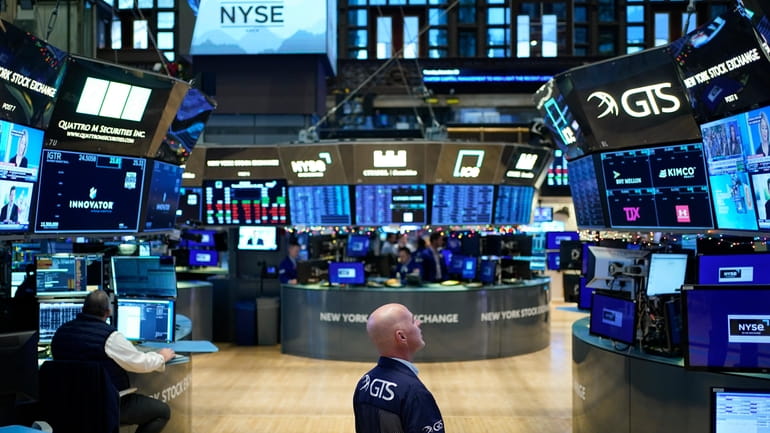GDP and jobs show the stock market bears are still early

Traders work on the floor at the New York Stock Exchange in Manhattan. Credit: AP/Seth Wenig
There's a price to be paid for being early in investing even if you get the broader story right, as U.S. stock market bears are learning the hard way.
While recession remains a very real threat, data released Thursday confirmed that it could take several quarters for the U.S. economy to run out of momentum. Gross domestic product increased at a 2.9% annualized rate in the last quarter of 2022, Commerce Department data showed, while a separate report showed that already low initial jobless claims declined.
The latest reports come on top of evidence that households still have stockpiles of excess savings accumulated during the COVID-19 pandemic that could take months or longer to deplete. Meanwhile, the S&P 500 Index is up about 12% from its Oct. 12 low, and many investors have missed the bounce because they've been hunkering down before the widely predicted recession.
To be sure, it's hard to look at Thursday's numbers and conclude that the bears are simply wrong. First, consider that the topline GDP number got a whopping 1.5 percentage point boost from the volatile inventory category, as my Bloomberg Economics colleague Eliza Winger underscored, while personal consumption growth — the true engine of the U.S. economy — moderated and came in slightly below consensus expectations. Spending on services such as health care, housing and personal care helped offset slow growth in goods, but that support may not endure.
Next, it's important to remember that GDP tends to collapse all at once in a recession. History is riddled with examples of the U.S. economy growing at a relatively hardy pace and then entering a recession a quarter or two later. Recessions happen suddenly and are often associated with unforeseen shocks.
Finally, it's important to remember why everyone got so pessimistic in the first place: the Federal Reserve's war on inflation. There's a chance that today's economic strength only emboldens the central bank to push interest rates even higher to temper inflation. Although there have been encouraging signs of moderating price trends in the past three months, Fed Chair Jerome Powell has said that he wants to see a "sustained period of below-trend growth" to achieve his goal of bringing inflation back down to 2%. If potential growth is around 2%, Thursday's 2.9% number could be interpreted as one of those classic "good news is bad news" developments — simply too hot for policymakers' taste. The market seemed to give credence to this view as the trading day progressed, with the market falling slightly from its intraday highs. The S&P 500 was essentially flat midmorning.
The Fed has raised interest rates by 4.25 percentage point in nine months, and history shows that such campaigns tend to end badly, even if the "long and variable" effects take a while to manifest. But considered alongside the job market data and other factors, it's hard to conclude that the U.S. economy is teetering at the precipice of an imminent collapse, which means that there could well be more medium-term stock rallies in the offing. Markets don't discount uncertain outcomes that far in advance, and investors who plan to hide in an all-cash bunker for the next 12 months risk missing out on the upside until then.
This column does not necessarily reflect the opinion of the editorial board or Bloomberg LP and its owners. Jonathan Levin has worked as a Bloomberg journalist in Latin America and the U.S., covering finance, markets and M&A. Most recently, he has served as the company's Miami bureau chief. He is a CFA charterholder.
